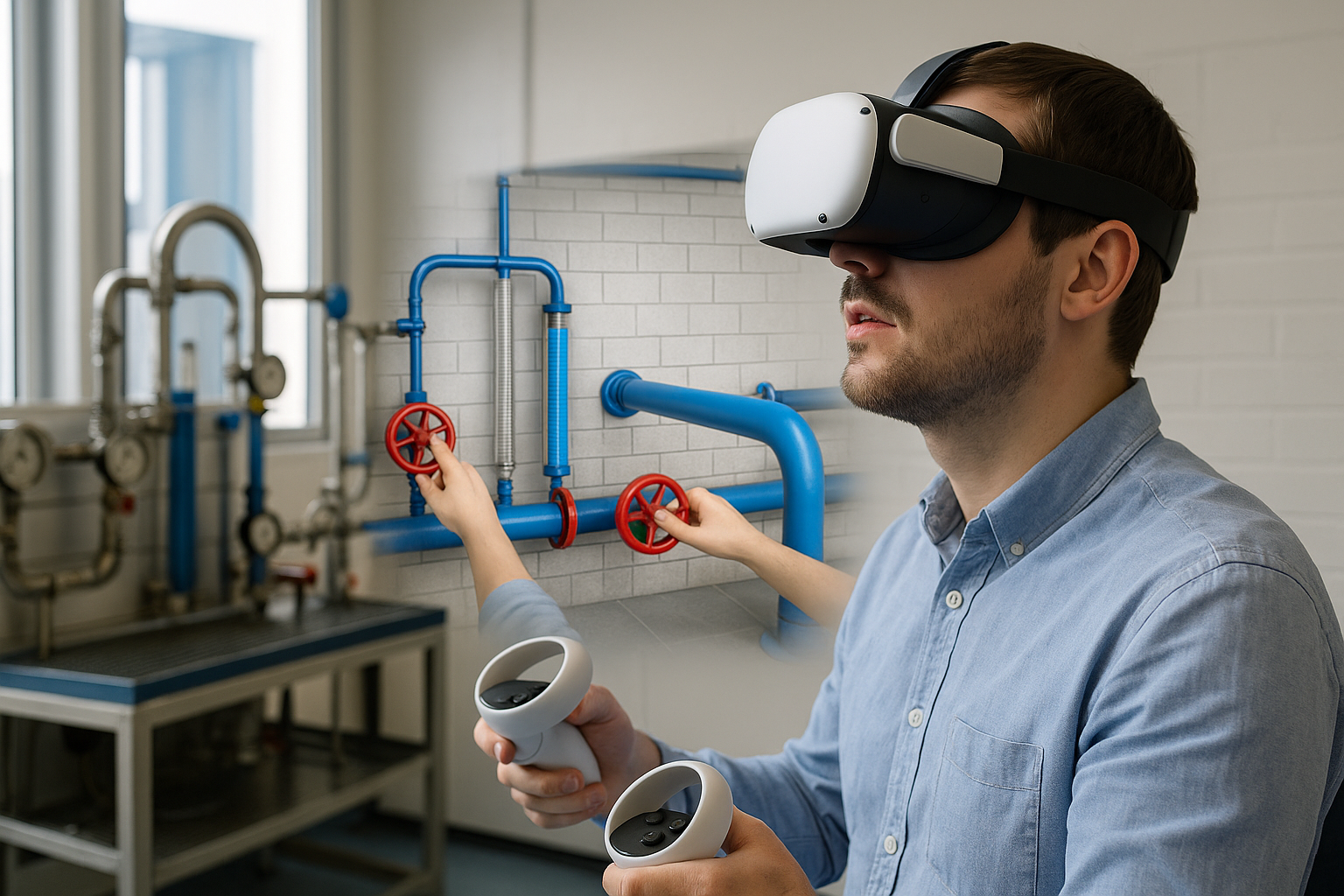Investing in virtual reality water education yields long-term economic gains
The findings align with economic theories that emphasize path dependency and the long-term nature of knowledge-driven growth. While short-term GDP shifts may be influenced by various externalities such as financial crises or pandemics, sustained investment in education gradually improves labor productivity, innovation output, and entrepreneurial capacity, all of which are key engines of economic development.

A new study has found that targeted investments in educational innovation can drive long-term economic growth. The research, published in Water, investigates how immersive learning technologies like virtual reality (VR) not only enhance technical education in water management but also foster macroeconomic development in widening countries, including Malta, Czechia, Serbia, and Türkiye.
Titled “Transforming Water Education Through Investment in Innovation: A Case Study on the Cost-Benefit of Virtual Reality in Water Education,” the study asserts that meaningful investment in education and innovation can catalyse sustainable economic development. Rather than viewing technology as an auxiliary tool, it should be integrated into core educational policy as a driver of long-term economic transformation.
How does education investment affect economic growth?
The researchers conducted a macroeconomic evaluation of how national spending on education influences gross domestic product (GDP) over time. Using panel data analysis from 2000 to 2022, the authors examined education expenditure as a percentage of GDP across four widening countries. While initial static models suggested only a weak correlation between education spending and immediate GDP growth, a more nuanced picture emerged when dynamic regression techniques were applied.
Introducing a one-year lag into the regression model revealed a sharp increase in explanatory power: R² jumped from 0.016 to 0.664. This shift demonstrated that the effects of educational investment are not immediate but become visible over time. Although the individual impact of education expenditure remained statistically insignificant in isolation, the model as a whole gained significance, supporting the long-held economic principle that human capital investment yields deferred but substantial returns.
The findings align with economic theories that emphasize path dependency and the long-term nature of knowledge-driven growth. While short-term GDP shifts may be influenced by various externalities such as financial crises or pandemics, sustained investment in education gradually improves labor productivity, innovation output, and entrepreneurial capacity, all of which are key engines of economic development.
What role does virtual reality play in water education?
To examine the educational impact more concretely, the research introduced a Virtual Reality Learning Environment (ViLE) tailored for water education. Developed through the EU-funded WATERLINE project, the VR application replicates a physical hydraulic laboratory model used for teaching pipe flow and pressure loss simulations. The platform was designed in four stages: physical analysis of the lab setup, 3D modeling, simulation integration, and the creation of supplementary instructional materials.
The VR system includes interactive modules covering theoretical lessons, guided tutorials, and freeform simulations. Students can manipulate virtual valves, monitor pressure variations, and analyze fluid dynamics in real time, replicating core engineering principles in a controlled, immersive space. Developed using Unity and Oculus Quest 2/Pro platforms, the simulation utilizes hand-gesture controls and includes visual feedback for intuitive navigation.
The application’s pedagogical advantages are clear. Traditional lab setups are limited by space, costs, and staffing requirements. In contrast, the VR model offers unlimited user access, eliminates the need for consumable resources like water, and reduces environmental impact. Students using the VR platform showed significantly improved performance across cognitive, affective, and psychomotor learning domains, especially in modules covering flood management and hydraulic simulation.
Is VR integration in education economically viable?
The researchers also conducted a detailed cost-benefit analysis comparing the VR setup to traditional hydraulic labs. While developing the VR application required approximately €18,500 in upfront investment, including hardware, development, and training, this figure was still markedly lower than the €25,000+ cost of physical labs. Maintenance and operational costs were also halved. When scaled to annual usage rates, the cost per student for the VR model was just €50, compared to €130 for traditional labs, while enabling double the user capacity per year.
In addiiton to cost efficiency, the study emphasized scalability and environmental sustainability. VR hardware can be reused without degradation, and simulations eliminate water waste and energy consumption associated with physical equipment. As such, VR offers a sustainable alternative for expanding access to technical education in regions with limited infrastructure.
Furthermore, a comprehensive user survey conducted across eight countries revealed strong acceptance and satisfaction among students and instructors. Participants praised the immersive interface, instructional clarity, and flexibility of the platform. Over 217 respondents from higher education institutions in Europe confirmed the tool's usefulness, usability, and pedagogical efficacy. The findings showed a clear increase in learner confidence, engagement, and retention, particularly among those studying engineering disciplines like water management.
The researchers also highlighted the strategic alignment between educational content and industry needs. Survey responses showed a high demand for technical skills such as data analysis, environmental modeling, and digital tool proficiency—skills effectively addressed through immersive VR-based modules.
What are the broader implications for policy and development?
The study argues that educational innovation, when thoughtfully implemented, serves not just as a teaching enhancement, but as a macroeconomic lever. By demonstrating how virtual learning environments improve skill acquisition, reduce costs, and enable broader access, the authors position VR as a high-yield investment for national governments and institutions seeking to modernize education while boosting competitiveness.
This is particularly relevant for widening countries, which often face structural challenges in integrating into broader European research and innovation ecosystems. Projects like WATERLINE, which link technology adoption with curriculum reform and international collaboration, provide a replicable model for building digital education infrastructure from the ground up.
- FIRST PUBLISHED IN:
- Devdiscourse








